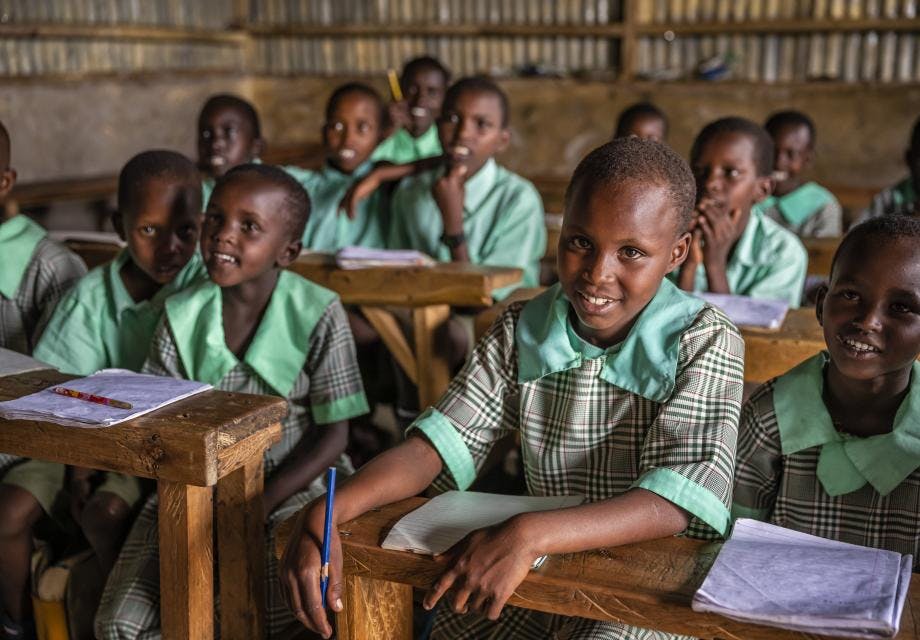“Your status cannot hinder you”: A report on resilience among adolescents engaged in HIV care in Kenya
Oliver Meth
02 August 2022
Despite the increasing availability of adolescent-friendly services, adolescents face barriers to antiretroviral treatment (ART) adherence
What is the study about?
This study aimed to identify key stigma-related barriers to ART adherence and the strategies used by adolescents to overcome these barriers.
Why is the research important?
Adolescents represent a large, vulnerable age group in the context of the HIV epidemic and are a growing proportion of people living with HIV globally. Almost 90% (approximately 1.5 million) of all adolescents living with HIV live in sub-Saharan Africa. In Kenya this age group is at the highest risk of dropping out of HIV treatment. So it is important to understand the sources and drivers of HIV stigma for adolescents, and increase awareness of how they can overcome these barriers.
What did they find out?
The study found a negative relationship between HIV-related stigma and adolescent resilience (the ability to function competently despite their HIV status), and that higher resilience was correlated with viral suppression.
It also highlighted common strategies used to support adolescents’ adherence. These include – offering adolescent support groups; dedicating specific clinic days to adolescents; and offering clinic days on weekends. There have also been efforts to hire staff from whom adolescents may feel more comfortable receiving care and counselling. This is reflected in the vast majority of clinics that currently offer peer leaders.
Self-acceptance of HIV status and future-oriented goals can drive motivation for adolescents to remain healthy
For many adolescents living with HIV beginning ART was challenging, especially for those who had trouble accepting their positive HIV status. Initially, fear of unknown medication and potential side effects was daunting. However, with time, many noticed the positive effects of taking ART, which motivated them to continue medication to remain healthy.
Disclosure to family and other trusted individuals strengthens support systems for adolescents living with HIV
A significant theme throughout the data was fear of HIV status disclosure. At least one parent or caregiver was often aware of HIV status early among those with perinatal HIV acquisition. However, anticipated stigma made disclosure to others difficult, leading many to hide their status from all but their closest family members. Many adolescents living with HIV made conscious decisions to disclose their status to only a select few critical people who they were confident would be sources of support.
Strategies for discrete pill-taking and strategic disclosure can overcome challenges at school
Adolescents spend much of their time in school, an environment that they described as creating specific challenges for adherence, with extremely high HIV stigma. This could lead to peer rejection, gossip, and special treatment from teachers that further isolated adolescents living with HIV from others.
A supportive clinic environment promotes continuous adolescent engagement in HIV care
Most adolescents living with HIV felt supported by their health clinics and clinic staff. Adolescents living with HIV and peer leaders agreed that youth friendly services were essential for engaging adolescents in care and providing a sense of belonging and age-specific support. Adolescent-friendly services discussed included youth-specific clinic days, youth-friendly clinic staff (including peer support), youth zones, adolescent support groups, and treatment buddy systems (where two adolescents support each other’s ART adherence through reminders, encouragement, and shared strategies). Most of the adolescents living with HIV valued youth-specific clinics or clinic days, which created a more comfortable atmosphere for them, and most importantly, provided confidentiality.
What does this mean for HIV services?
Those working with adolescents need to understand the relationships between resilience and the effects of HIV stigma, and between resilience and treatment adherence.
Adolescent programme and service managers should consider prioritising activities that can build resilience among adolescents living with HIV. More peer engagement is one way to strengthen support for adolescents and improve ART adherence.
Those providing services to adolescents need to consider their individual, home, school and healthcare contexts. Training for peer educators, healthcare workers and school staff needs to be expanded to increase the support that they can provide to adolescents.
There is also an urgent need to address the stigma related to adolescents living with HIV and there is now good evidence about how to do this.
If you are working to support adolescents living with HIV, it will be useful to adopt some of these approaches and to advocate with policymakers and other decision makers to adopt them.
Get our news and blogs by email
Keep up-to-date with all our latest news stories and blogs by signing up to the Be in the KNOW news digest.
